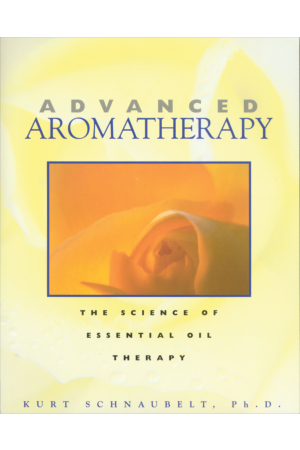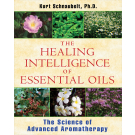- Pages: 144
- Book Size: 8 x 10
- ISBN-13: 9780892817436
- Imprint: Healing Arts Press
- On Sale Date: May 1, 1998
- Format: Paperback Book
- Illustrations: 75 b&w illustrations
Aromatherapy is the fastest-growing segment of the body care industry, an effective and deeply pleasurable way to maintain well-being. Now, Kurt Schnaubelt, a chemist and longtime aromatherapy practitioner, provides scientific proof for the efficacy of essential oils, explained clearly and logically.
Advanced Aromatherapy draws on the most recent research to demonstrate how essential oils work on the cells and microbes of the body. These chemical changes affect emotional states as well as physical ones.
Advanced Aromatherapy explains how to treat symptoms ranging from hay fever to stress disorders with predictable results.
An essential textbook for aromatherapy practitioners.
Advanced Aromatherapy
The Science of Essential Oil Therapy
1. Aromatherapy: A Challenge to Conventional Medicine
Antibiotics: The Downfall of Conventional Medicine
Civilization from One Source
Aromatherapy: An Answer
The Immune System: Not a One-Way Street
Complex Information from Plants
The History of Aromatherapy
2. Essential Oils--Definition and Distillation
Plant Messengers
Essential Oils--Distillation, Chemistry, and History
Essential Oil Terminology
The Composition of Essential Oils
Spectrum of Action of Essential Oil Components
3. The Effects of Essential Oils
Antibacterial Effects
The Aromatogram
Antiviral Effects
Inhalation and Expectorant Effects
Sedative and Antispasmodic Effects
4. Self-Treatment with Essential Oils
Real and Potential Risks
Essential Oils and the Skin
Contraindications and Unusually Toxic Oils
5. Choosing Essential Oils
The Relationship between Chemical Structure and Effects
Descriptions of the Oils
6. Application of Essential Oils
Methods of Application
Areas of Use
Bruises, Sprains, Sports Injuries
Burns
Wounds and Scars
Lymphatic System
Herpes
Shingles
Bladder Infections
Bloodshot Eyes and Conjunctivitis
Nervousness, Tension, Stress
Motion Sickness
Fatigue
Infectious Illnesses
Respiratory Conditions
Skin Conditions
Cosmetics with Natural Substances
7. Aromatherapy: Mediating between the Immune System, Emotions, and the Body
Aromatherapy and the Immune System
Aromatherapy and Asthma
Aromatherapy and Viral Diseases
An End to the Separation of Body and Mind
Afterword
Endnotes
Resources
Index
NAPRA ReView Vol. 9, No.5
"Schnaubelt presents sound research to demonstrate how essential oils interact with the different systems of the body."
Making Scents, Winter 1998-99
"Schnaubelt clearly and logically illustrates the science of his healing art. . . . Exciting, must have information for anyone going beyond a dab of relaxing lavender on the pillow or peppermint drops in honey water for an upset stomach. . . . An important new reference."
So Young!




